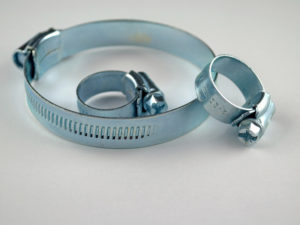 Hoses have been around for thousands of years for transporting liquids (gases, etc.) from one place to another. They were pivotal in the fluid transfer process then and are even more important now. The trouble is, now, they work behind the scenes so efficiently that sometimes their maintenance slips.
Hoses have been around for thousands of years for transporting liquids (gases, etc.) from one place to another. They were pivotal in the fluid transfer process then and are even more important now. The trouble is, now, they work behind the scenes so efficiently that sometimes their maintenance slips.
When maintenance slips, leaks happen. Suddenly, that hidden hose that’s been working brilliantly for all that time, unnoticed, becomes front and center with all of its attached problems. Why do they leak? We know exactly why.
Hose clamps
The number one reason for hose leakage is a faulty connection. Hoses are never independent of what they’re attached to. Where hoses meet their connection points (called barbs) are the most problematic areas. Among the types of hose clamps, adjustable hose clamps make the most useful hose-to-connection security seal. In the name, these reliable clamps can adjust to different hose and connection points sizes, cinching the points securely so the fluid transfer process is thoroughly sealed. Without them being attached properly, your hose seal risks leaks of whatever is being transferred, so be wary of size and quality of your hose clamps.
They’re heavy duty, not invincible
Out of sight, out of mind pieces of equipment like hoses and hose clamps are meant to take on heavy jobs with continuous stress over long periods of time. This doesn’t make them not deteriorate. Again, the main breakdown points are where hoses meet connections, but hoses themselves can also become worn with age. They often transfer very hot, high-pressure substances and are in the vicinity of hot, sharp mechanical features (think engine hoses, etc.) which can cause damage just by proximity. Keep a sharp eye and you won’t find your hose in hot water.
At last, human error
Thought you escaped this one unscathed, didn’t you? You have to take care of your hose. They’re inanimate objects given really tough jobs, then forgotten about. Check up on the ones that keep things running, whether they’re in the house, car, garden, wherever. Sometimes replacement hose clamps and hoses are needed, but they will last a long time if they’re well looked after.
Beneath the surface and behind the scenes the combination of hoses and hose clamps are working to make sure things are literally flowing smoothly. Save yourself the tedious process of seeking out a problem with proper preventative care and you’ll have happy hoses all around.

